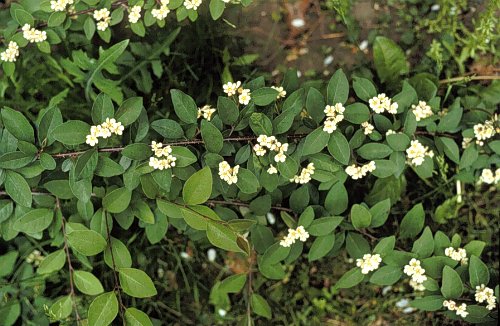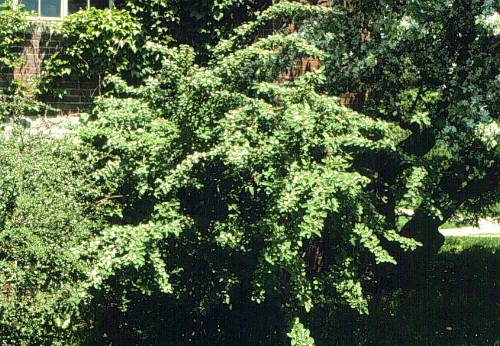Cotoneaster multiflorus
Many-flowered Cotoneaster
Rosaceae
ExpandHabitat
- native to western China
- hardy to zone 4
Habit and Form
- a deciduous, medium to large shrub
- 9' to 12' tall with an equal to greater width
- upright shrub with weeping branch habit; fountain-like
- medium texture
- medium growth rate
Summer Foliage
- alternate leaf arrangement
- simple, deciduous leaves
- ovate leaf shape
- 1" to 2.5" long and a little over half as wide
- bluish green leaf color
- tomentose underside
Autumn Foliage
- yellow fall color
Flowers
- small, white flowers
- 0.5" across
- blooms in early spring
- born is clusters of corymbs
- emits odor
Fruit
- red pome fruit
- 0.33" in diameter
- ripen in September through October
- can be showy
- persists
Bark
- young purple stems; pubescent
Culture
- transplant from containers only because of sparse root system
- prefers well-drained, loose soil
- wind tolerant
- pH adaptable
- full sun to partial shade
- prune tolerant
- salt tolerant
Landscape Use
- hedge
- bank cover
- groupings or mass
- espalier
- for flowers or fruit effect
- screen
Liabilities
- generally trouble-free for a cotoneaster
ID Features
- imbricate bud, appressed with loose exposed outer scales
- fishbone stem pattern
- pale pink flowers
- black, pome fruits
- irregular growth habit
- long spreading branches
- alternate leaves
- pubescence on underside of leaf
Propagation
- by seed, stratification required
- cuttings
Cultivars/Varieties
var. calocarpus - A form that is not often seen in the trade, but is said to bear larger fruit in greater quantity than the species.

